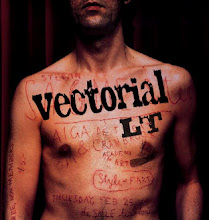


Correction Appended
What to do with our aging architectural heroes? What if their genius deteriorates and they begin tinkering with their own masterpieces? A powerful case in point is the Brazilian architect Oscar Niemeyer, who celebrated his 100th birthday this month. In the 1940s, ’50s and ’60s he established himself as one of Modernism’s greatest luminaries, infusing stark abstract forms with a beguiling tropical hedonism that reshaped Brazil’s identity in the popular imagination and mesmerized architects around the globe.
In Brasília, a city that rose out of a savanna in the span of four years, he created at least a half dozen architectural masterpieces — a mind-boggling accomplishment by today’s standards. Today Mr. Niemeyer is held up as one of Brazil’s greatest national treasures, and he seems as spry as ever. He is at work on a cultural center in Aviles, Spain, and another in Niteroi, just south of Rio de Janeiro. He recently unveiled a new line of furniture at the Art Basel Miami fair. And last year he married his longtime secretary, Vera Lúcia Cabreira.
In recognition of the heroic scale of his accomplishments, Brazil’s president, Luiz Inácio Lula da Silva, recently proposed legislation that would confer special landmark status on all of his buildings.
But the greatest threat to Mr. Niemeyer’s remarkable legacy may not be the developer’s bulldozer or insensitive city planners, but Mr. Niemeyer himself.
It is not simply that his latest buildings have a careless, tossed-off quality. It’s that some of his most revered buildings — from the Brasília Cathedral to the grand Monumental Axis of the city itself — have been marred by the architect’s own hand. And this poses an uncomfortable dilemma: At what point do we — that is, the public that idolizes him, his government and private clients — have an obligation to intervene? Or is posing the question an act of spectacularly bad taste?
To those who pay close attention, the decline in the quality of Niemeyer’s work — whether resulting from a creative lull or complacency brought on by fame or old age — has been evident since he completed his Museum of Contemporary Art in Niteroi in 1996. Resting lightly on a single column at the edge of a cliff, its white saucer-shaped form looks best against the glamorous backdrop of Guanabara Bay.
What’s missing, however, is the lightness of touch that could draw you deeper into the work. The concrete surfaces are crude and unfinished; the structure lacks the careful refinement that gave his early buildings a textured significance and signaled that the architect cared deeply about the people who would inhabit them.
It’s as if the museum were designed by a lesser talent who could mimic the graceful lines in Mr. Niemeyer’s sketches but lacked the skill and patience to see the design through.
But if the art museum is an inferior work that mostly suffers in comparison with his early masterpieces, his midcentury projects in central Brasília are another matter: a trove of Modernist landmarks conceived on the grandest scale.
No photograph can prepare a visitor to the 1958 National Congress building for the delicacy with which it is set into the landscape. Surrounded by immaculate lawns, its form sunken slightly into the ground, it exerts a gravitational pull as you approach. A long, narrow ramp leads to a roof, where the public can stroll around the base of the bowl-like form of the chamber of deputies. That expression of the bond between a government and the people is as moving today as it was when the building was inaugurated half a century ago.
Even more refined is the nearby Itamaraty Palace, built to house the Ministry of Foreign Relations. Its soaring slender arches, rising from vast reflecting pools, are like a soothing oasis in a vast flat landscape. Inside, a circular staircase is conceived as a series of cantilevered concrete slabs. As you climb, you can practically feel gravity releasing its hold on your body, a physical sensation that reinforces the building’s visual lightness.
Such structures are arranged along the plazas with the precision of pieces on a chessboard. The spaces among them convey both an airiness and a subtle tension among their varied forms, charging the whole with energy.
Completed in an era when millions of Americans were fleeing cities for the homogenous suburbs of the Eisenhower era, and Europe was still limping through its recovery from World War II, Brasília seemed to assert that erotic desire and human tenderness had a place in modern society. Better still, the stunning speed of its construction suggested that this sensual utopia was only as far away as the next cocktail.
The force of that vision reverberated across the United States and Europe. Lincoln Center in Manhattan, Empire State Plaza in Albany, the Los Angeles Music Center — all owe a debt to Niemeyer. And today a young generation versed in computer enhancement has found inspiration in his fluid concrete curves.
But if Brasília’s high-flown status as a showplace of Modernist architecture is well known, Mr. Niemeyer’s more recent work there has barely been discussed.
by
What to do with our aging architectural heroes? What if their genius deteriorates and they begin tinkering with their own masterpieces? A powerful case in point is the Brazilian architect Oscar Niemeyer, who celebrated his 100th birthday this month. In the 1940s, ’50s and ’60s he established himself as one of Modernism’s greatest luminaries, infusing stark abstract forms with a beguiling tropical hedonism that reshaped Brazil’s identity in the popular imagination and mesmerized architects around the globe.
In Brasília, a city that rose out of a savanna in the span of four years, he created at least a half dozen architectural masterpieces — a mind-boggling accomplishment by today’s standards. Today Mr. Niemeyer is held up as one of Brazil’s greatest national treasures, and he seems as spry as ever. He is at work on a cultural center in Aviles, Spain, and another in Niteroi, just south of Rio de Janeiro. He recently unveiled a new line of furniture at the Art Basel Miami fair. And last year he married his longtime secretary, Vera Lúcia Cabreira.
In recognition of the heroic scale of his accomplishments, Brazil’s president, Luiz Inácio Lula da Silva, recently proposed legislation that would confer special landmark status on all of his buildings.
But the greatest threat to Mr. Niemeyer’s remarkable legacy may not be the developer’s bulldozer or insensitive city planners, but Mr. Niemeyer himself.
It is not simply that his latest buildings have a careless, tossed-off quality. It’s that some of his most revered buildings — from the Brasília Cathedral to the grand Monumental Axis of the city itself — have been marred by the architect’s own hand. And this poses an uncomfortable dilemma: At what point do we — that is, the public that idolizes him, his government and private clients — have an obligation to intervene? Or is posing the question an act of spectacularly bad taste?
To those who pay close attention, the decline in the quality of Niemeyer’s work — whether resulting from a creative lull or complacency brought on by fame or old age — has been evident since he completed his Museum of Contemporary Art in Niteroi in 1996. Resting lightly on a single column at the edge of a cliff, its white saucer-shaped form looks best against the glamorous backdrop of Guanabara Bay.
What’s missing, however, is the lightness of touch that could draw you deeper into the work. The concrete surfaces are crude and unfinished; the structure lacks the careful refinement that gave his early buildings a textured significance and signaled that the architect cared deeply about the people who would inhabit them.
It’s as if the museum were designed by a lesser talent who could mimic the graceful lines in Mr. Niemeyer’s sketches but lacked the skill and patience to see the design through.
But if the art museum is an inferior work that mostly suffers in comparison with his early masterpieces, his midcentury projects in central Brasília are another matter: a trove of Modernist landmarks conceived on the grandest scale.
No photograph can prepare a visitor to the 1958 National Congress building for the delicacy with which it is set into the landscape. Surrounded by immaculate lawns, its form sunken slightly into the ground, it exerts a gravitational pull as you approach. A long, narrow ramp leads to a roof, where the public can stroll around the base of the bowl-like form of the chamber of deputies. That expression of the bond between a government and the people is as moving today as it was when the building was inaugurated half a century ago.
Even more refined is the nearby Itamaraty Palace, built to house the Ministry of Foreign Relations. Its soaring slender arches, rising from vast reflecting pools, are like a soothing oasis in a vast flat landscape. Inside, a circular staircase is conceived as a series of cantilevered concrete slabs. As you climb, you can practically feel gravity releasing its hold on your body, a physical sensation that reinforces the building’s visual lightness.
Such structures are arranged along the plazas with the precision of pieces on a chessboard. The spaces among them convey both an airiness and a subtle tension among their varied forms, charging the whole with energy.
Completed in an era when millions of Americans were fleeing cities for the homogenous suburbs of the Eisenhower era, and Europe was still limping through its recovery from World War II, Brasília seemed to assert that erotic desire and human tenderness had a place in modern society. Better still, the stunning speed of its construction suggested that this sensual utopia was only as far away as the next cocktail.
The force of that vision reverberated across the United States and Europe. Lincoln Center in Manhattan, Empire State Plaza in Albany, the Los Angeles Music Center — all owe a debt to Niemeyer. And today a young generation versed in computer enhancement has found inspiration in his fluid concrete curves.
But if Brasília’s high-flown status as a showplace of Modernist architecture is well known, Mr. Niemeyer’s more recent work there has barely been discussed.
by
Fuente: THE NEW YORK TIMES




No hay comentarios:
Publicar un comentario